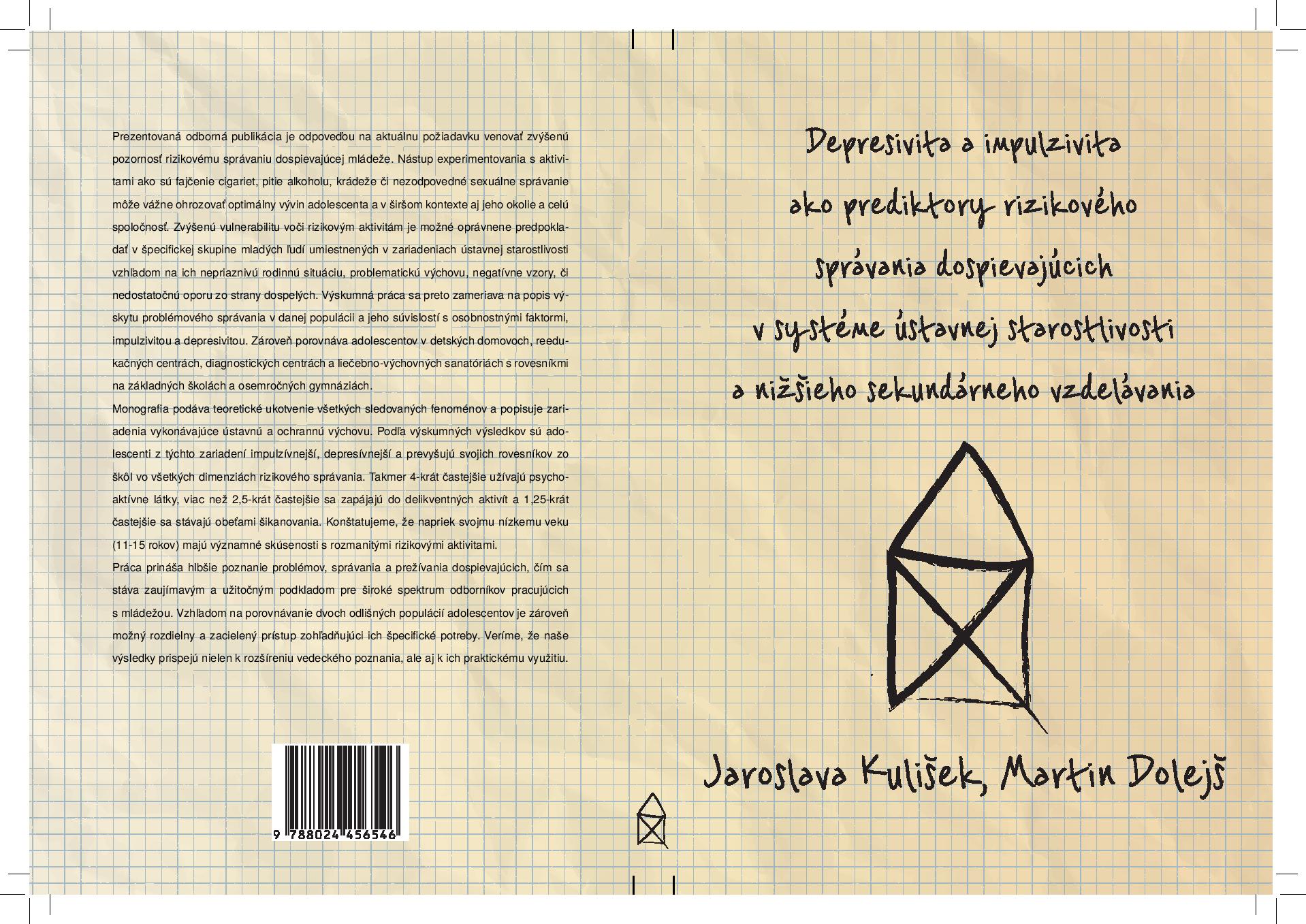Test of Impulsivity in Adolescence
Adolescence is a very important developmental stage between
childhood and adulthood. It brings numerous changes, as well
as new impulses and experiences (Pfeifer & Allen, 2019). The
influence of parental figures is gradually replaced with the in–
fluence of peers. Their influence can be positive – for instance,
mutual motivation towards the achievement of good study re–
sults. In adolescence, however, teens are prone to various neg–
ative impulses such as risky behaviour, frequently encouraged
by negative peer pressure (McCoy et al., 2019). This period is
also related to greater susceptibility to problematic behaviour,
which is frequently also associated with a greater rate of im–
pulsivity (D’Acremont & Linden, 2005; Leshem & King, 2020).
There are a number of scholars looking into the phenomenon
of impulsivity and its antecedents and consequences from
various perspectives (Cross et al., 2011; Marvin et al., 2020).
Eysenck and Eysenck (1985) define impulsivity as a constitu–
ent of tendencies supporting the seeking of spontaneous and
thoughtless exciting experiences. It also seems that in some
cases it may be a constituent of psychoticism. According to
Cloninger et al. (1993), impulsivity is a super-factor in search–
ing for the novel (new excitement, experiences, acts) which
is not restricted by rules or limitations. Webster and Jackson
(1997) argue that impulsivity is normally distributed in the
population and individuals manifest a certain degree of it.
Individuals with a high rate of impulsivity tend to prefer small
immediate benefits to larger but delayed ones, and they are not
able to save their reward for later (Kalina et al., 2015).
A common feature in individual definitions of impulsivity is the
idea that impulsivity is a personality trait included in various
personality theories that may be summed up as a propensity
to act without thinking (Dolejš & Skopal, 2016). Impulsive indi–
viduals tend to conduct various activities that are not planned
or premeditated and at the same time are risky either for the
individual himself/herself or for others.
Impulsivity is also a contributory factor to certain mental dis–
eases. In DSM-5 and ICD-11 (APA, 2013), impulsivity is listed as
a separate category of control disorders that includes disorders
such as kleptomania, pyromania, addiction to playing games,
and gambling. Apart from this taxonomy, a link has been found
between impulsivity and a propensity for risky behaviour or a
tendency to indulge in risky activities such as the abuse of ad–
dictive substances and vandalism (Dolejš & Orel, 2017).

